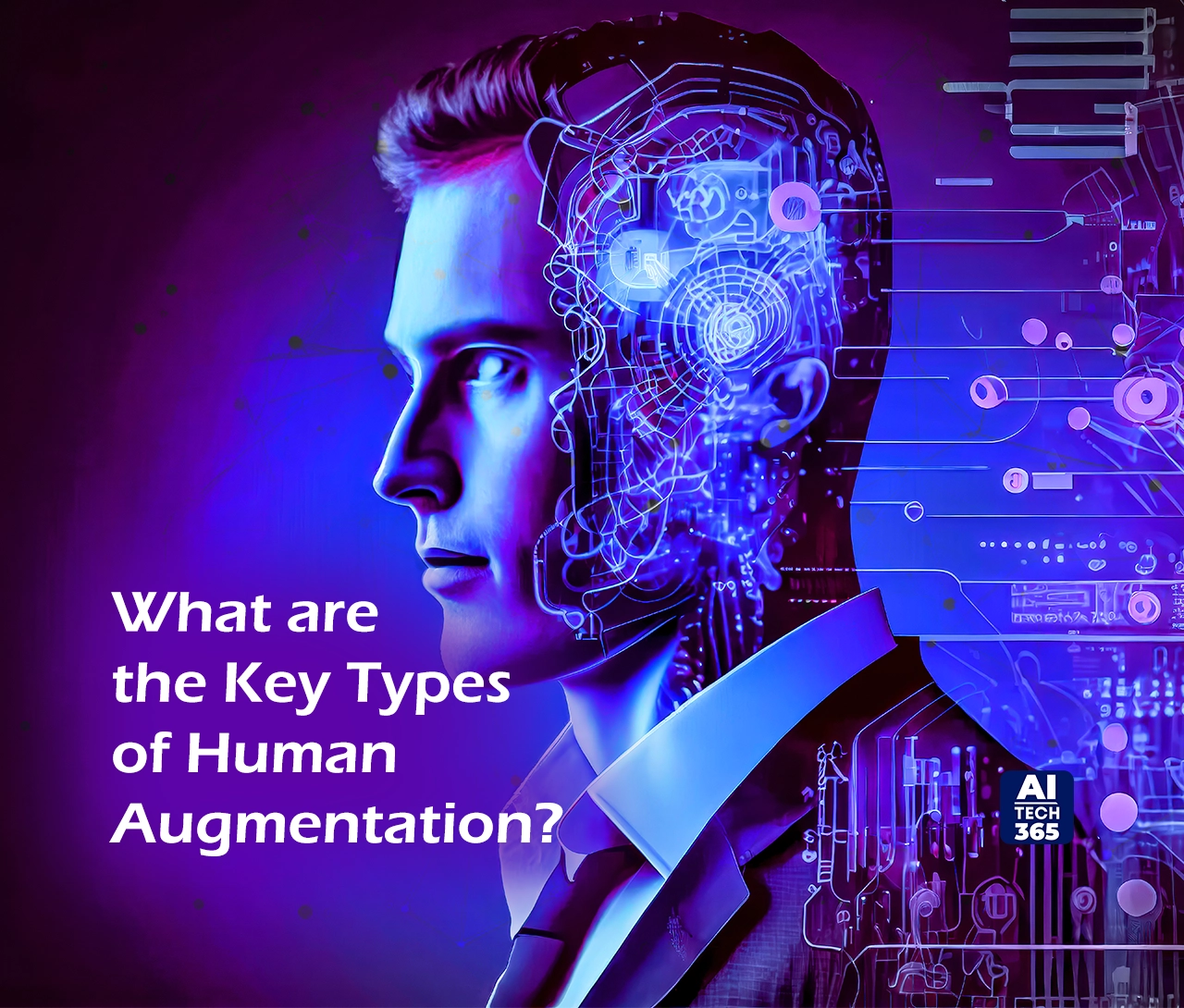Human augmentation is not necessarily new. We see it in our everyday life. For instance, getting better word suggestions while texting or finding Netflix shows we like. Now, imagine this in our work life. Picture a system that knows us well. It understands our tasks, needs, and goals. This system would be like a digital twin. It mirrors our preferences, jobs, ambitions, passions, and dreams.
The human augmentation technology should support people naturally. It should center on the specific work the workforce needs to accomplish. The system must focus on safety, security, and personal ownership. It should also gather, analyze, and share insights with approved APIs, applications, or people.
The future of enterprise is bright when it bridges human creativity with machine intelligence. Enterprises are exploring to achieve this vision through a cohesive suite of capabilities. These capabilities deliver data when and where it is needed. The system uses contextualization and hyper-personalization. Consequently, these systems handle routine tasks autonomously. They also highlight opportunities for both personal and professional development.
In this blog, let us have a look at what human augmentation is and how it supports decision-making.
What is Human Augmentation?
Human augmentation is also known as “Human 2.0.” It centers on enhancing cognitive and physical abilities to integrate with the human body. One example is the development of advanced prosthetic limbs. These limbs are equipped with active control systems. They help to achieve performance levels beyond natural human capabilities.
Let’s dig in more to understand how this technology works.
What are the Key Types of Human Augmentation?
Augmentation enhances human abilities through technology. It improves existing skills and enables new ones. The following are three main types:
1. Cognitive
Cognitive augmentation involves technology that supports mental processes. Augmented cognition tools help improve decision-making, memory, and focus.
2. Action
This type focuses on enhancing physical abilities. Robotic advancements have made artificial limbs very precise. They now have the capability to expand human physical abilities.
3. Sensory
Mainly, it restores abilities or fixes impairments. It enhances the human senses by interpreting multisensory data.
Human augmentation in decision-making emphasizes supporting rather than replacing human intelligence. Augmented intelligence leverages AI technologies to provide data insights. Hence, it enables quicker, more informed decisions without substituting human judgment. For instance, AI can analyze vast datasets and highlight key patterns. This approach allows humans to incorporate a broader context.
Humans can use these nuanced insights for more effective decision-making. However, this augmentation can present challenges. For instance, risks of bias or lack of transparency. In such cases, decisions influenced by AI may feel unchallengeable due to complexity. Thus, human oversight is essential to maintain fairness and accountability. Moreover, human intervention is required to have control over AI-influenced outcomes.
What are the Vast Range of Applications of Human Augmentation Technology?
This technology spans multiple industries, each with unique implementations:
1. Military
In military applications, it enhances physical strength and human abilities for decision-making. Hence, it is a valuable technology for military applications. Technologies range from AI-driven analytics that support rapid, informed decisions to exoskeletons that enhance physical capabilities. These capabilities offer a competitive advantage on the battlefield.
2. Manufacturing
In manufacturing, AI and Machine Learning (ML) optimize supply chains. These tools forecast supply needs and automate reorder processes. Additionally, it has the capability to schedule predictive maintenance to minimize downtime.
3. Healthcare
Augmentation technologies are transforming healthcare by restoring abilities for individuals. Following are the examples:
- Cochlear implants for hearing
- Bionic eyes for vision
- Brain-Computer Interfaces (BCI)
They enable users to control computers, prosthetics, or robotic devices through thought alone.
4. Finance:
AI-driven data analysis in finance helps identify and prevent fraud. It ensures adherence to regulatory compliance by providing a secure and reliable framework for financial operations.
Each industry leverages this technology in distinct ways. These ways are tailored to its specific demands and goals.
Let us now have a look at the initial steps organizations need to take to integrate this tech to improve human capabilities.
Best Practises to Integrate Human Augmentation to Enhance Decision-Making
Businesses should start integrating augmented intelligence into their enterprises. If that’s the case for your business, you can focus on these foundational steps:
1. Embrace a Data-Driven Culture
Make data central to every function. Equip employees with the tools and skills to leverage data insights. It is crucial to make data literacy a priority across teams. This cultural shift empowers staff at all levels. They can harness the potential of augmented intelligence effectively.
2. Build a Strong Foundation for Innovation
Migrate data and analytics to the cloud to increase agility, flexibility, and scalability. Cloud infrastructure provides a strong foundation. This foundation enables rapid adaptation to changing demands. Additionally, it fuels continuous improvement and innovation.
3. Focus on Purpose-Driven Profitability
Build a resilient organization by prioritizing long-term value creation. Align augmented intelligence strategies with a clear purpose. Businesses should enhance trust and engagement among employees, customers, and investors. This approach ultimately drives sustained profitability.
4. Develop a Comprehensive Approach
Connect people, processes, data, and technology throughout the organization. This integration allows augmented intelligence to function as a cohesive tool. It helps optimize decision-making and improve overall performance across departments.
5. Seek Industry and Functional Expertise
Partner with experienced industry and technology experts. These partners can help realize your vision for augmented intelligence. They have the knowledge and best practices to align it with industry standards. As a result, they can improve implementation success.
By following these steps, enterprises can better position themselves in the digital age. With augmented decision-making, leaders can move swiftly in response to evolving market demands. It is crucial to stay competitive and create impactful experiences. These experiences strengthen relationships with employees, customers, and stakeholders.
Also Read: A Holistic Guide To AI Training Data
How Human Augmentation Is Empowering Decision-Making?
This innovation is presented as a transformative technology for empowering decision-making. This is especially true in complex environments like the military. Here are the key points on how human augmentation is impacting decision-making:
1. Augmented Cognition Abilities
This technology primarily enhances cognitive functions, such as decision-making, perception, and problem-solving. This is achieved through advancements in brain engineering. These advancements are particularly related to brain stimulation and brain-computer interfaces (BCIs). They strengthen memory, situational awareness, and analytical skills. It is essential for decision-making in high-stress situations.
2. Real-Time Decision Support
BCIs and microelectromechanical systems (MEMS)-based neurotechnology enable real-time data processing. They support swift and informed decision-making by providing instant feedback and situational analysis. For instance, in military applications like the Cognitive Technology Threat Warning System (CT2WS). It can notify soldiers about potential threats. The system processes brain signals to detect and interpret immediate surroundings.
3. Reduced Cognitive Load
Augmented intelligence helps people understand complex data. It reduces the cognitive load on individuals. This allows them to focus on important tasks without being overwhelmed. As a result, decisions are made more quickly and accurately. The risk of errors decreases, especially in urgent situations.
4. Enhanced Situational Awareness
Augmentation technologies improve situational awareness. It processes environmental data and helps individuals better interpret their surroundings. This is particularly useful in military contexts. Real-time analysis and monitoring of brain activity can improve the response to dynamic environments. It enhances both individual and team decision-making.
5. Collaborative Intelligence and Group Decision-Making
The technology extends beyond individual enhancement to facilitate group decision-making. This approach enables collaborative intelligence. It synchronizes cognitive boosts among team members. This improves decision-making, making it faster and more accurate.
6. Overcoming Physical and Mental Constraints
MEMS neural interfaces and advanced neuroengineering can boost decision-making. They help overcome physical and mental limits, especially under stress or fatigue. This is vital in high-risk situations, where focus and mental strength are key.
7. Ethical and Operational Considerations
There are ethical considerations for adopting this technology. Augmented decision-making involves managing biases. It is also critical to ensure that augmented intelligence does not replace human judgment but rather empowers it. The emphasis should be on designing augmentation systems that maintain human control. The systems also need to ensure fair and transparent decision-making.
These points underscore how human augmentation is reshaping decision-making. It enables more rapid, accurate, and coordinated responses, especially in high-stakes environments.
Future Scope
Human augmentation technologies being discussed today are still largely in their early stages. The vision for augmentation is bold. Its near-term advancements will be more practical and closer to everyday applications. AI is already woven into many aspects of daily life. It will continue to expand its role, impacting how we work and live. As AI’s capabilities advance, its influence will become even more integral. The influence will be seen both in professional settings and in personal life.
One promising direction for this tech is BCI technology. It is gaining momentum as major tech companies invest in its development. The research and development in BCI represents a significant step forward. It bridges human and machine learning in ways that were once science fiction. These technologies may soon become a natural extension of human performance. It will enhance how we interact with the digital world around us.


